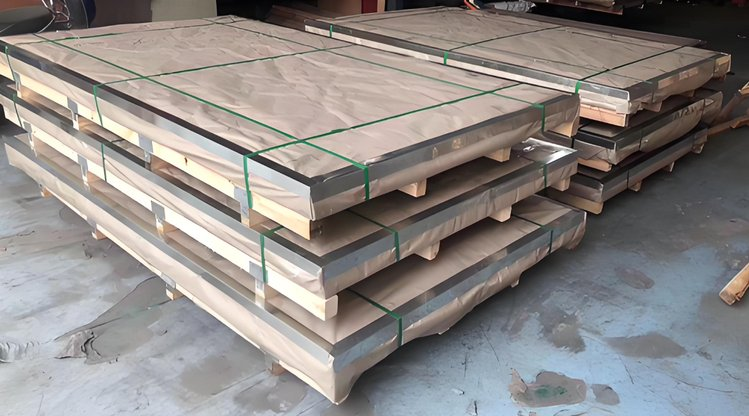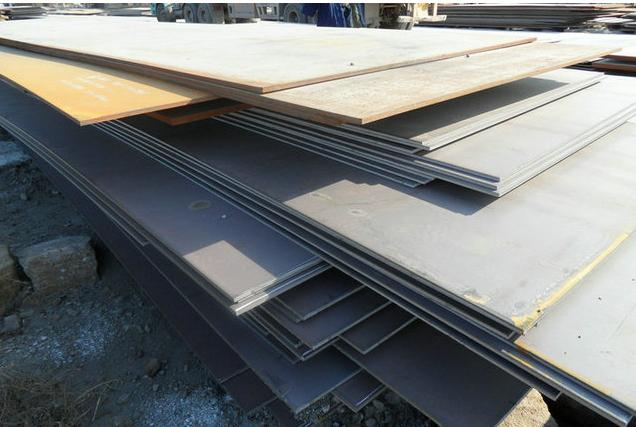Alloy steel
Classification of alloy steel
According to alloy element content
Low alloy steel (total alloy element is less than 5%), medium alloy steel (total alloy element is 5%-10%), high alloy steel (total alloy element is higher than 10%).
According to alloy element composition
Chromium steel (Cr-Fe-C), chromium-nickel steel (Cr-Ni-Fe-C), manganese steel (Mn-Fe-C), silicon-manganese steel (Si-Mn-Fe-C).
According to small sample normalizing or cast structure
Pearlite steel, martensite steel, ferrite steel, austenite steel, ledeburite steel.
According to use
Alloy structural steel, alloy tool steel, special performance steel.
Alloy steel numbering
The carbon content is indicated by a number at the beginning of the grade. It is stipulated that the carbon content is indicated by a number (two digits) in units of one ten-thousandth for structural steel and one digit (one digit) in units of one thousandth for tool steel and special performance steel, and the carbon content is not indicated when the carbon content of tool steel exceeds 1%.
After indicating the carbon content, the chemical symbol of the element is used to indicate the main alloying element in the steel. The content is indicated by the number behind it. When the average content is less than 1.5%, no number is marked. When the average content is 1.5% to 2.49%, 2.5% to 3.49%, etc., 2, 3, etc. are marked accordingly.
Alloy structural steel 40Cr has an average carbon content of 0.40%, and the content of the main alloying element Cr is less than 1.5%.
Alloy tool steel 5CrMnMo has an average carbon content of 0.5%, and the content of the main alloying elements Cr, Mn, and Mo are all less than 1.5%.
Special steels are marked with the Chinese phonetic initials of their uses. For example: ball bearing steel, marked with “G” before the steel number. GCr15 indicates ball bearing steel with a carbon content of about 1.0% and a chromium content of about 1.5% (this is a special case, the chromium content is expressed in a number of one thousandth). Y40Mn indicates free-cutting steel with a carbon content of 0.4% and a manganese content of less than 1.5%, etc. For high-quality steel, “A” is added to the end of the steel to indicate this, such as 20Cr2Ni4.
Alloying of steel
After alloying elements are added to steel, the basic components of steel, iron and carbon, will interact with the added alloying elements. The purpose of alloying steel is to improve the structure and properties of steel by utilizing the interaction between alloying elements and iron and carbon and the influence on the iron-carbon phase diagram and the heat treatment of steel.
Interaction between alloying elements and iron and carbon
After alloying elements are added to steel, they exist in steel mainly in three forms. That is: forming a solid solution with iron; forming carbides with carbon; and forming intermetallic compounds in high-alloy steel.

Alloy structural steel
The steel used to manufacture important engineering structures and machine parts is called alloy structural steel. There are mainly low-alloy structural steel, alloy carburizing steel, alloy quenched and tempered steel, alloy spring steel, and ball bearing steel.
Low-alloy structural steel
1. Uses Mainly used in the manufacture of bridges, ships, vehicles, boilers, high-pressure vessels, oil and gas pipelines, large steel structures, etc.
2. Performance requirements
(1) High strength: Generally, its yield strength is above 300MPa.
(2) High toughness: The elongation is required to be 15% to 20%, and the room temperature impact toughness is greater than 600kJ/m to 800kJ/m. For large welded components, higher fracture toughness is also required.
(3) Good welding performance and cold forming performance.
(4) Low cold brittle transition temperature.
(5) Good corrosion resistance.
3. Composition characteristics
(1) Low carbon: Due to the high requirements for toughness, weldability and cold forming performance, its carbon content does not exceed 0.20%.
(2) Adding alloy elements mainly composed of manganese.
(3) Adding auxiliary elements such as niobium, titanium or vanadium: A small amount of niobium, titanium or vanadium forms fine carbides or carbonitrides in steel, which is conducive to obtaining fine ferrite grains and improving the strength and toughness of steel.
In addition, adding a small amount of copper (≤0.4%) and phosphorus (about 0.1%) can improve corrosion resistance. Adding a small amount of rare earth elements can desulfurize and degas, purify the steel, and improve toughness and process performance.
4. Commonly used low-alloy structural steels
16Mn is the most used and produced steel in my country’s low-alloy high-strength steel. The structure in use is fine-grained ferrite-pearlite, and the strength is about 20% to 30% higher than that of ordinary carbon structural steel Q235, and the atmospheric corrosion resistance is 20% to 38% higher.
15MnVN is the most used steel in medium-grade strength steel. It has high strength, and good toughness, weldability and low-temperature toughness. It is widely used in the manufacture of large structures such as bridges, boilers, and ships.
When the strength level exceeds 500MPa, ferrite and pearlite structures are difficult to meet the requirements, so low-carbon bainite steel was developed. Adding elements such as Cr, Mo, Mn, and B is conducive to obtaining bainite structure under air cooling conditions, making the strength higher, and the plasticity and welding performance are also better. It is mostly used in high-pressure boilers, high-pressure containers, etc.
5. Heat treatment characteristics
This type of steel is generally used in the hot-rolled air-cooled state and does not require special heat treatment. The microstructure in the use state is generally ferrite + troostite.
Post time: Jan-23-2025
